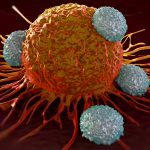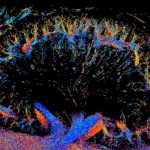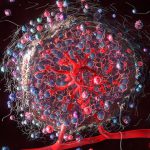A multidisciplinary group of investigators at the University of Pittsburgh and Barrow Neurological Institute in Phoenix created an interactive molecular atlas of traumatic brain injury, or TBI, in mice, which may help doctors use precision medicine to target treatments for TBI patients in the future. This research was published this week in Neuron.

Patrick Kochanek, M.D.
“We believe that these findings have the potential to lead to truly precision therapies targeting neuroinflammation after TBI across the injury spectrum, a goal that has eluded the field for decades,” said co-senior author Dr. Patrick Kochanek, distinguished professor, vice chair of critical care medicine and director of the Safar Center at Pitt.
With 40 million to 50 million new cases each year, the global incidence of TBI outstrips common neurological diseases, including stroke and Alzheimer’s disease. Effective treatments have remained elusive because each TBI case is unique, but treatments are not.
A TBI happens externally, but within the brain a cascade of internal responses occurs at the molecular level. These responses are important for repair and regeneration of the brain, but they also trigger seizures, neuroinflammation and neurodegeneration. The atlas will help physicians target TBIs at the molecular level, potentially improving treatment outcomes.
Researchers explored the cell-specific complexity of response to a TBI – including the effect of distance from the impact site and time from injury. The interactive web-based platform has documented several key outcomes across all these variables that can be explored and customized based on individual preferences.
The atlas, the first of its kind, includes 334,376 cells and information about how they respond to TBI.
“This atlas may help doctors use tools like biomarkers, multimodality monitoring, genomic profiling and neuroimaging to bring precision-medicine research to a field dominated by a uniform approach,” said lead author Dr. Ruchira Jha, director of neurocritical care research at Barrow Neurological Institute. “Our searchable atlas is a foundation for future research to understand cell-specific impacts post-TBI. This is a living atlas in that we are continuing to build upon this with additional samples and variables.”

Gary Kohanbash, Ph.D.
“This report represents a giant leap forward in setting the foundation for TBI research and we are already using it to guide additional studies focused on treatments following TBI,” added co-senior author Dr. Gary Kohanbash, assistant professor of neurological surgery and expert on single-cell RNA sequencing and brain tumor biology in the Department of Neurological Surgery at Pitt.
Efforts to translate the insights from the atlas into clinical applications and define unique TBI-specific therapies are already underway. Researchers hope that the atlas will be used by investigators worldwide to better understand mechanisms and pathways of interest to their own research, and that others will build on this atlas to further enrich knowledge across the TBI injury spectrum, and across species.

Dhivyaa Rajasundaram, Ph.D.
“Combining the investigators, institutional and departmental strengths from Barrow Neurological Institute, Pitt’s Department of Neurological Surgery and the Safar Center for Resuscitation Research has been incredible to push this initiative to its success,” said co-senior author Dr. Dhivyaa Rajasundaram, director of the UPMC Children’s Hospital of Pittsburgh Bioinformatics Core.









